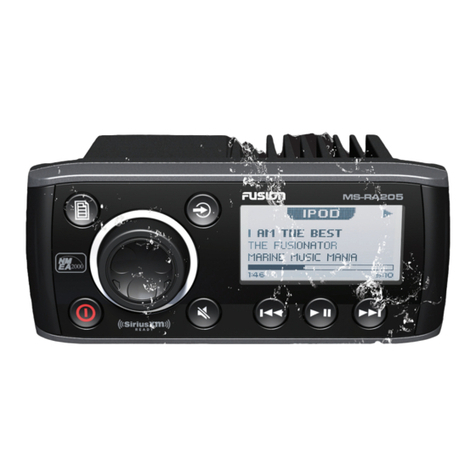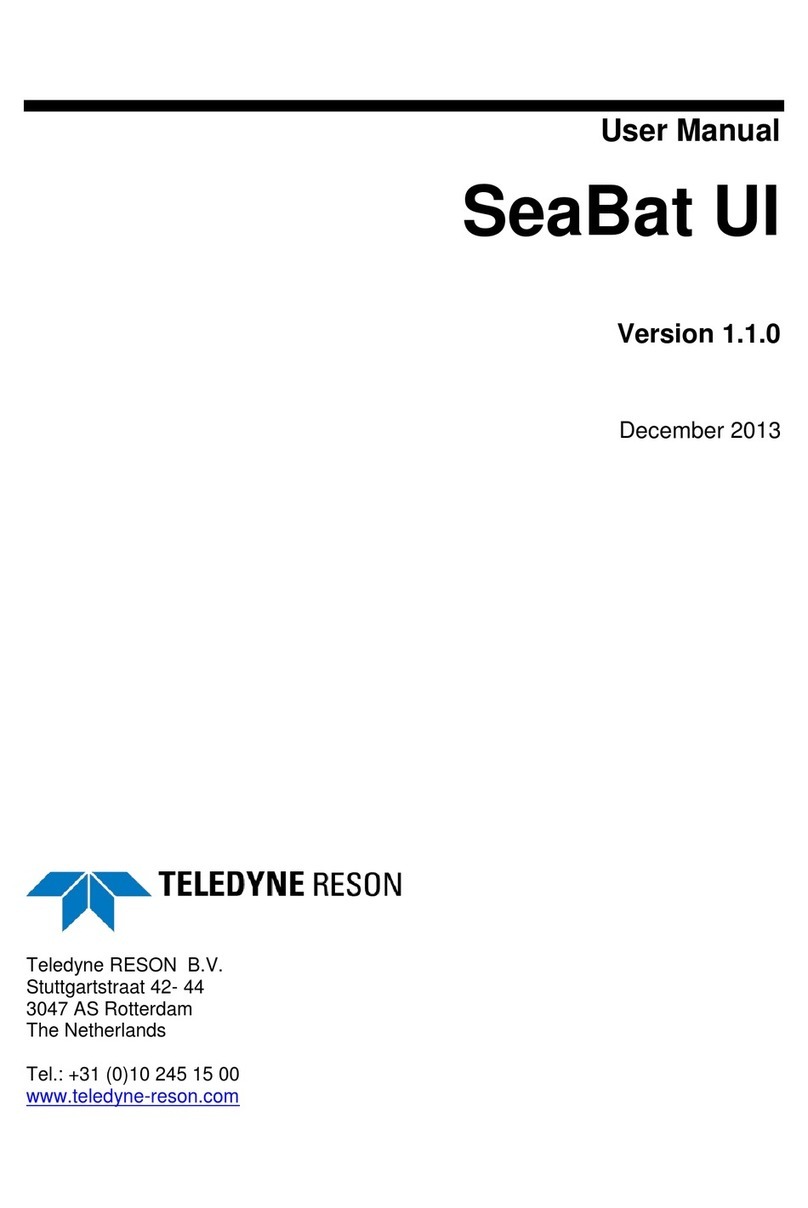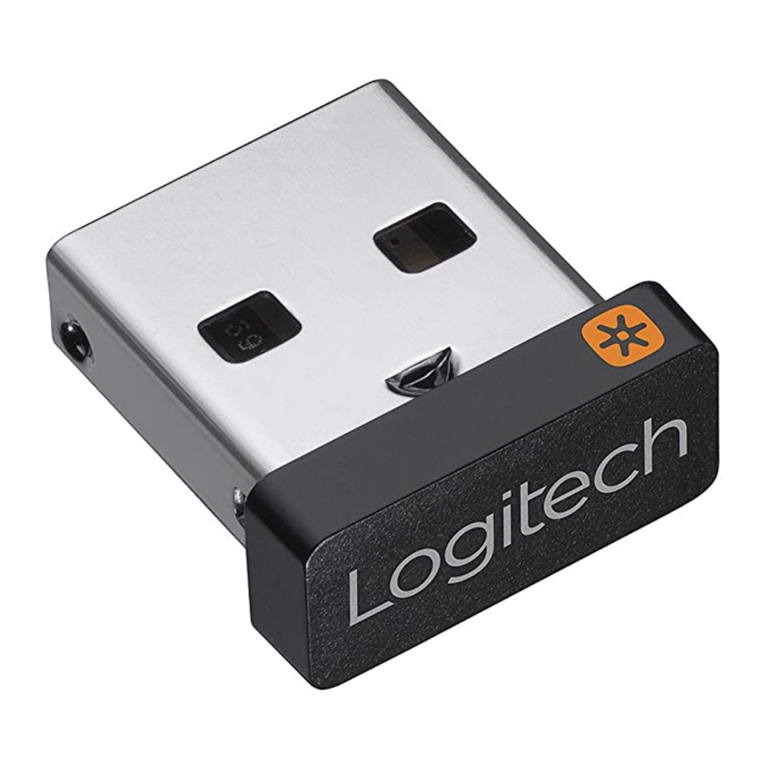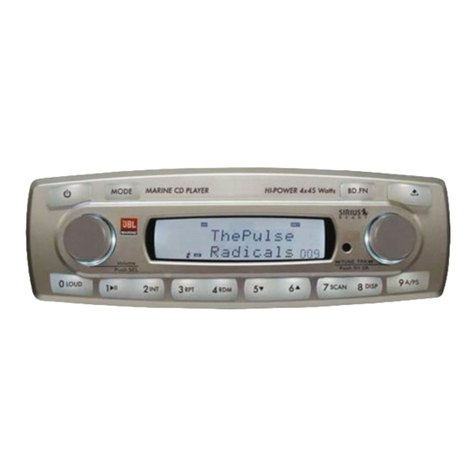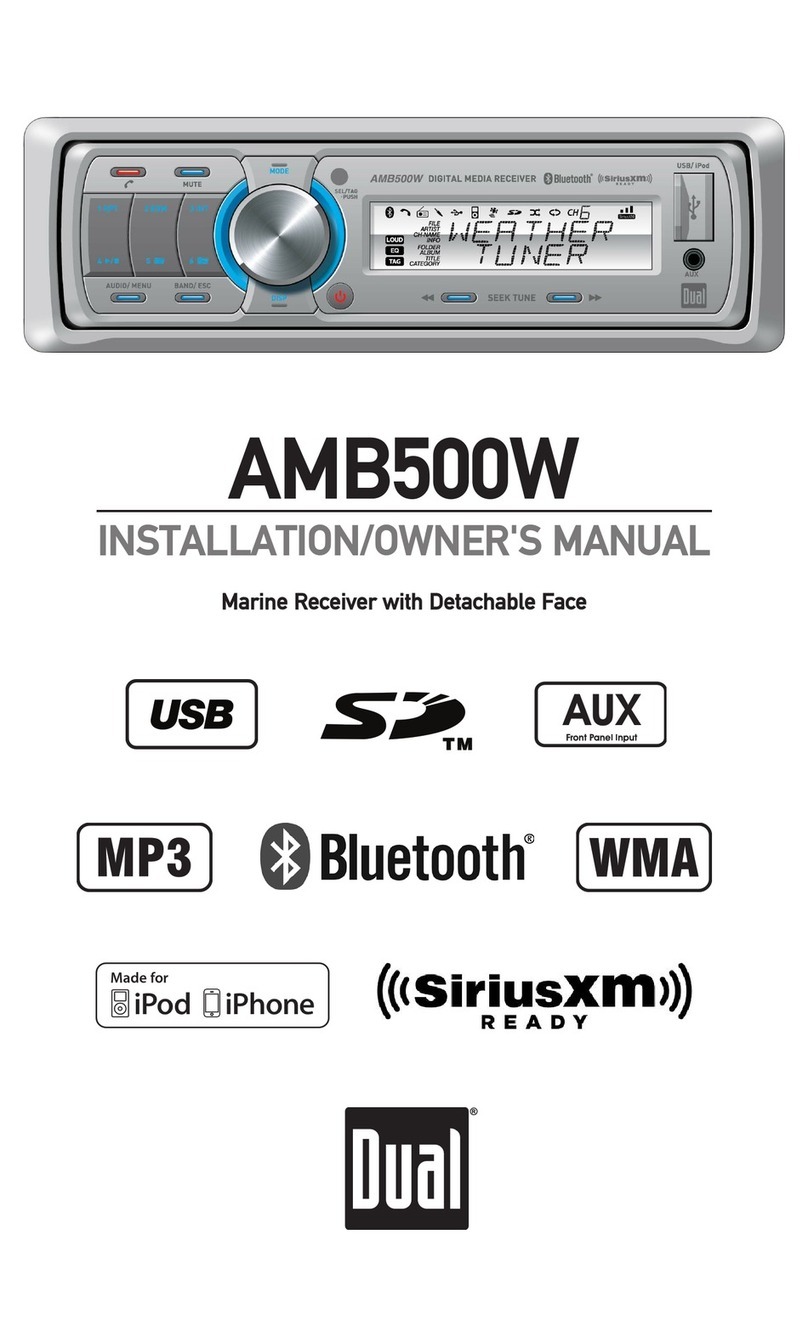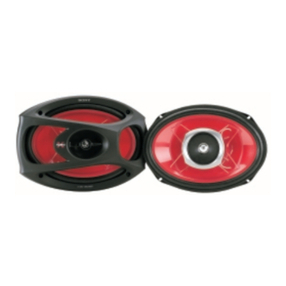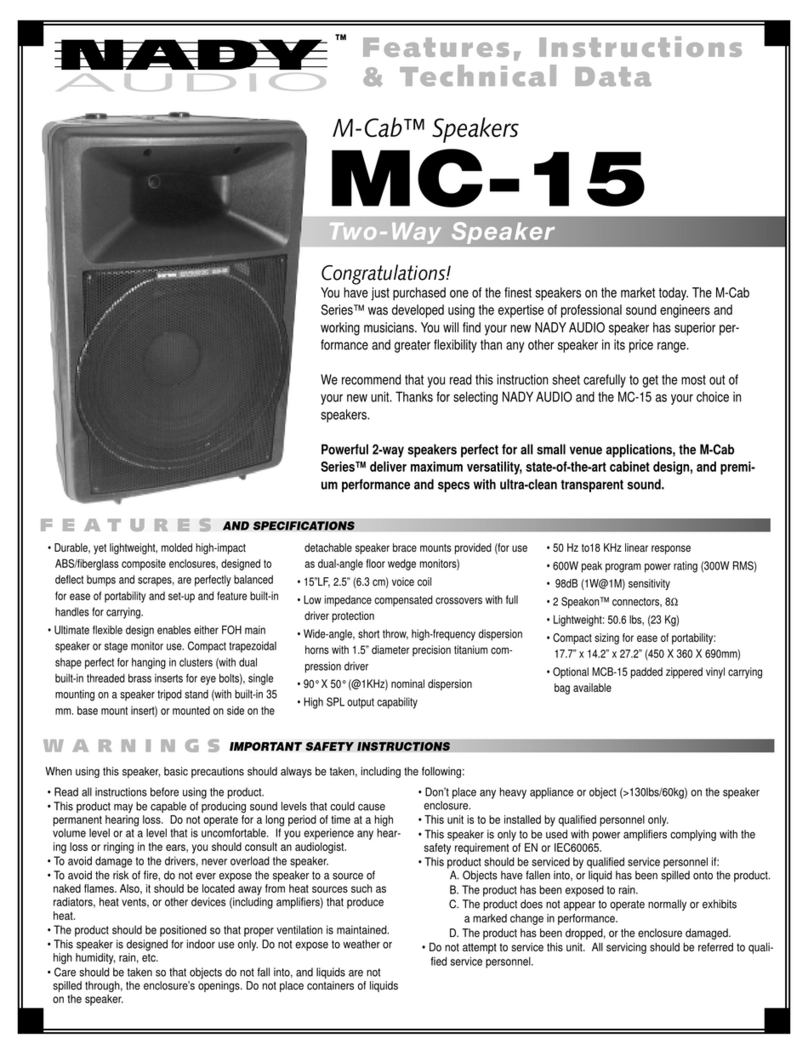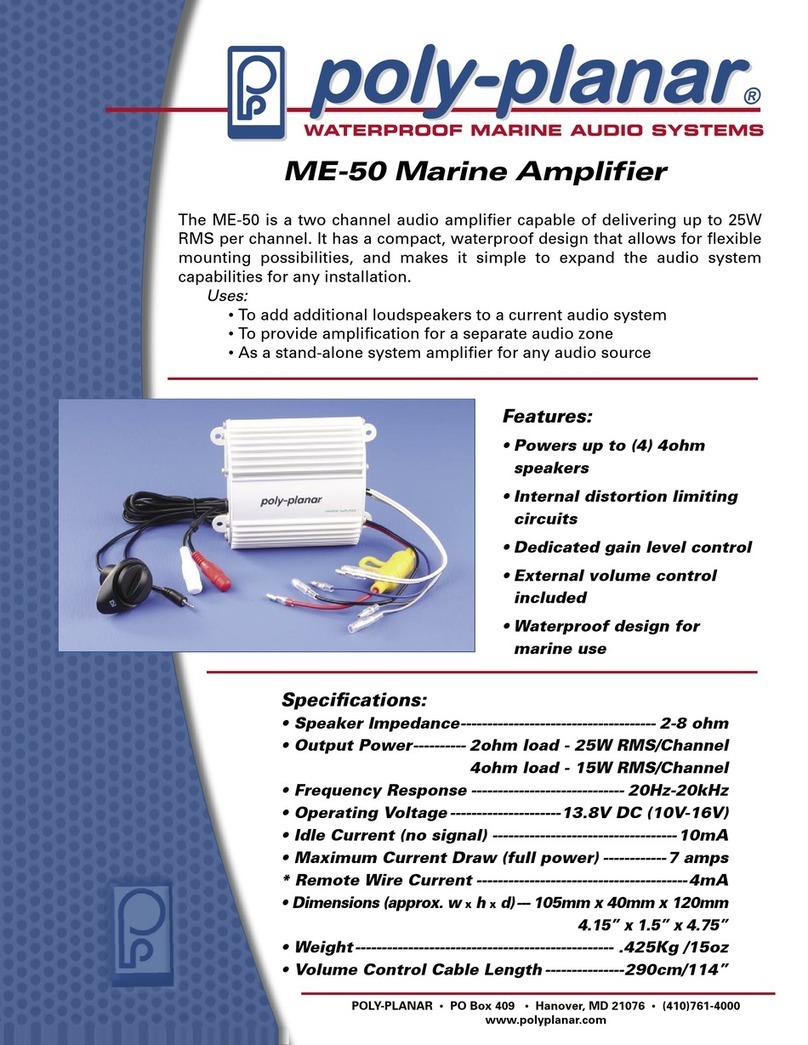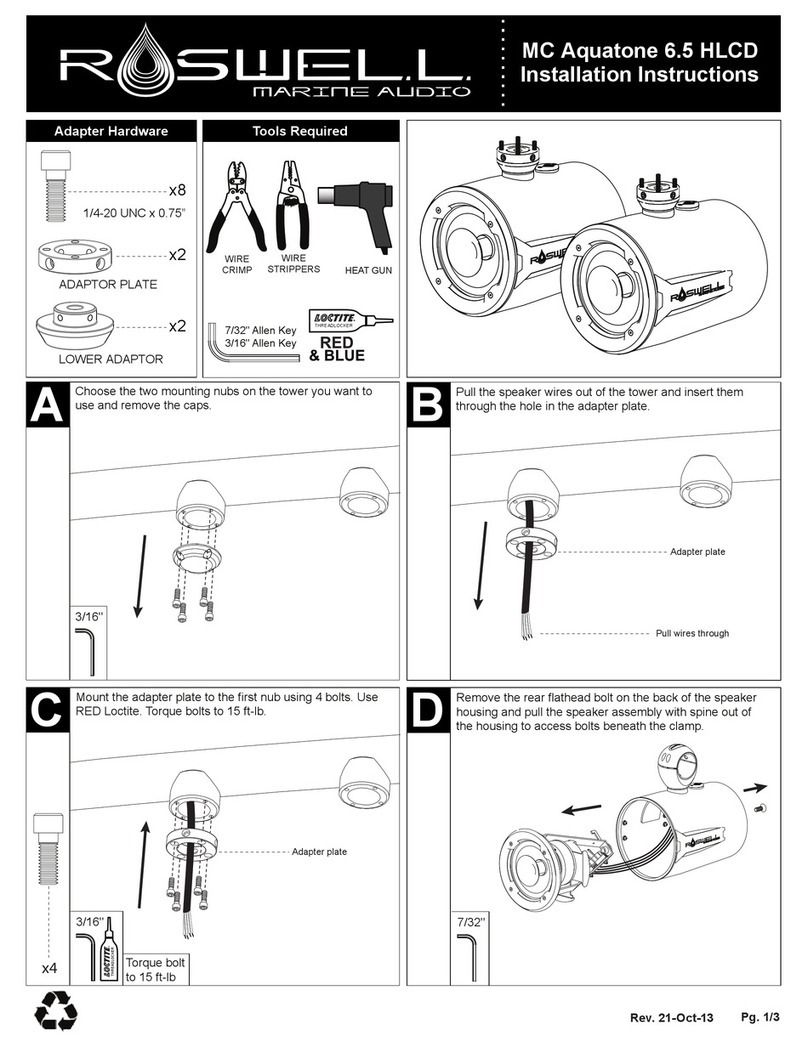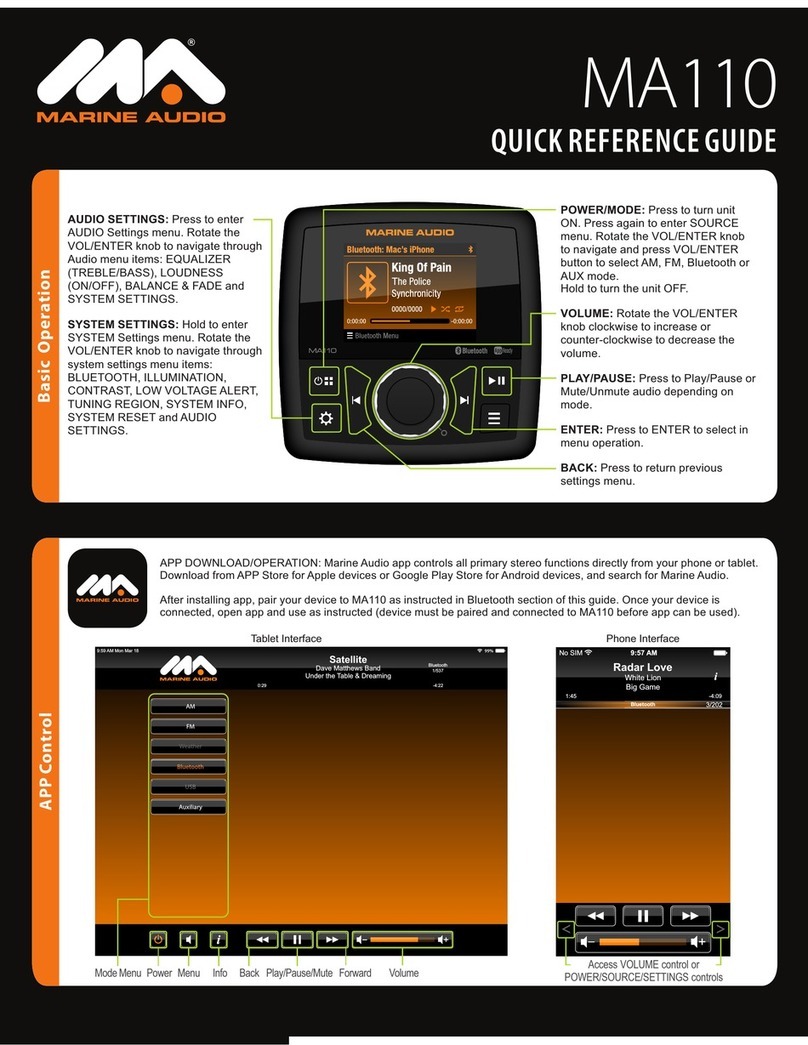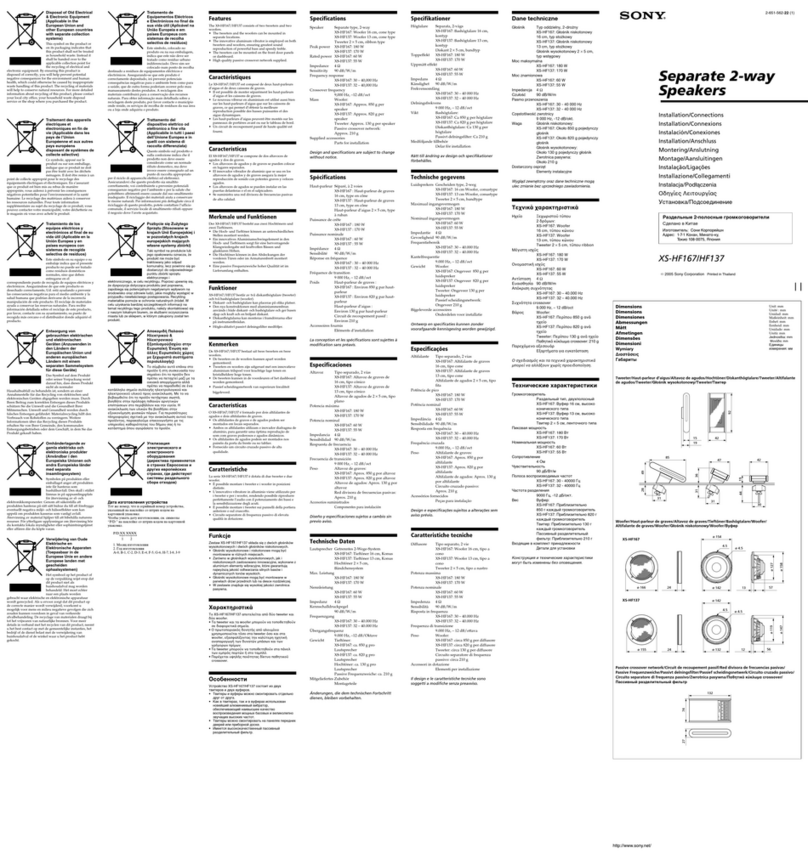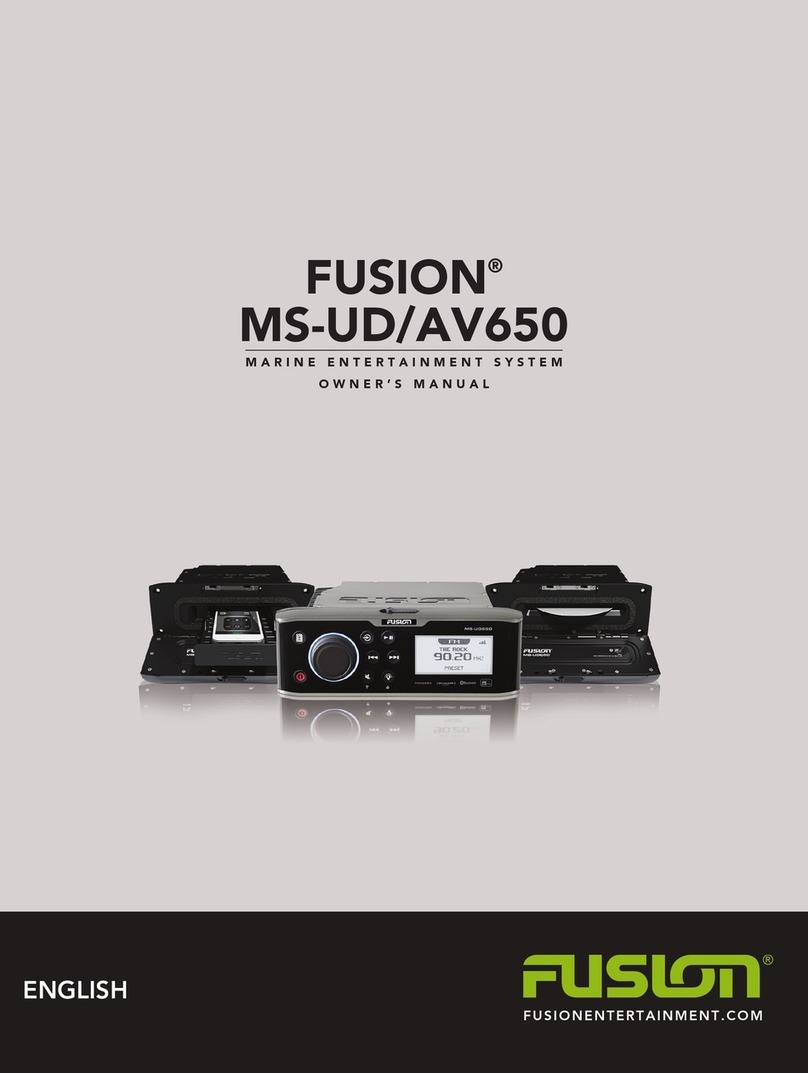Clarion M335 User manual

- 1 -- 1 -
- 1 -- 1 -
- 1 - M335/M235M335/M235
M335/M235M335/M235
M335/M235
Source unit 1
DCP Case 335-5734-22 1
Mounting bracket 300-7742-20 1
Outer Escutcheon
(PE-2587B-A) 370-6041-01 1
Outer Escutcheon
(PE-2587B-B) 370-6041-02 1
Extension Lead 854-6391-60 1
Part’s bag 1
Removal key 331-2497-20 2
PE-2587B-A PE-2587B-BPE-2587B-A PE-2587B-B
PE-2587B-A PE-2587B-BPE-2587B-A PE-2587B-B
PE-2587B-A PE-2587B-B
FEATURES
NOTE
1. We cannot supply PWB with component parts in
principle. When a circuit on PWB has failure, please
repair it by component parts base. Parts which are
not mentioned in service manual are not
supplied.
SeSe
SeSe
Servrv
rvrv
rvice Manualice Manual
ice Manualice Manual
ice Manual
Published by Clarion (Malaysia)
298-6026-00 JUNE 2003P
Printed In Malaysia
Clarion ( Malaysia) Sdn. Bhd.Clarion ( Malaysia) Sdn. Bhd.
Clarion ( Malaysia) Sdn. Bhd.Clarion ( Malaysia) Sdn. Bhd.
Clarion ( Malaysia) Sdn. Bhd.
Phase 3, Free Trade Zone One, 11900 Bayan Lepas, Penang, Malaysia
Tel: (60) 4-6439-106, Fax: (60) 4-6439-108
Clarion Co. Ltd.Clarion Co. Ltd.
Clarion Co. Ltd.Clarion Co. Ltd.
Clarion Co. Ltd.
Export Division : 50 Kamitoda, Toda-shi, Saitama 335-8511 Japan
AM/FM Marine CD PlayerAM/FM Marine CD Player
AM/FM Marine CD PlayerAM/FM Marine CD Player
AM/FM Marine CD Player
ModelModel
ModelModel
Model
M335M335
M335M335
M335
(Model : PE-2587B-A: For all countries)
ModelModel
ModelModel
Model
M235M235
M235M235
M235
(Model : PE-2587B-B: For all countries)
(Model: M335)
(Model: M235)
COMPONENTS
Radio sectionRadio section
Radio sectionRadio section
Radio section
Model: PE-2587B-AModel: PE-2587B-A
Model: PE-2587B-AModel: PE-2587B-A
Model: PE-2587B-A (with wire remote control)
Model: PE-2587B-BModel: PE-2587B-B
Model: PE-2587B-BModel: PE-2587B-B
Model: PE-2587B-B (without remote control)
Tuning system: PLL synthesizer tuner
Receiving frequencies:FM 87.9 to 107.9MHz (0.20 MHz steps)
AM 530 to 1,710kHz (10 kHz steps)
CD player sectionCD player section
CD player sectionCD player section
CD player section
System: Compact disc audio system
Usable disc: Compact disc
Frequency response: 10Hz to 20kHz (+1dB/-1dB)
Signal to Noise ratio: 100dB (1kHz) IHF-A
Dynamic range: 95dB (1kHz)
Distortion: 0.01%
GeneralGeneral
GeneralGeneral
General
Max. Power Output: 50W x 4
Line Output: 1.7V (with CD 1kHz, 10k ohm)
Bass Control Action: +14dB/-14dB (30Hz)
Treble Control Action: +14dB/-14dB (10 kHz)
Power supply voltage: DC 14.4V (10.8 to 15.6V allowable)
negative ground
Current consumption: Less than 15A
Speaker impedance: 4 ohm (4 ohm to 8 ohm allowable)
Dimensions (mm): 178 (W) x 50 (H) x 152 (D)mm
Weight: 1.1kg
SPECIFICATIONS
Specification and design are subject to change without notice for
further improvement.
M335M335
M335M335
M335
Conformally Coated Microprocesor
Plays CD-R & CD-RWs
Z-Enhancer
Rotary Volume Control
Input for Marine Wired Remote Control
White Positive LCD with White Buttons
Detachable Faceplate
2 Channel RCA Line Level Output
200 Watt (50W x 4)
Tuner with 18 FM/6 AM Preset
Magna Bass EX
Screen Saver
Aluminium Face Plate
M235M235
M235M235
M235
Conformally Coated Microprocesor
Detachable Faceplate
Plays CD-R & CD-RWs
2 Channel RCA Line Level Output
200 Watt (50W x 4)
Z-Enhancer
Magna Bass EX
Tuner with 18 FM/6 AM Preset
Rotary Volume Control
White Psitive LCD with White Buttons
Screen Saver

- 2 -- 2 -
- 2 -- 2 -
- 2 -
M335/M235M335/M235
M335/M235M335/M235
M335/M235
To engineers in charge of repair or
inspection of our products.
Before repair or inspection,make sure to follow the
instructions so that customers and Engineers in charge of
repair or inspection can avoid suffering any risk or injury.
1. Use specified parts.
The system uses parts with special safety features
against fire and voltage. Use only parts with equivalent
characteristics when replacing them.
The use of unspecified parts shall be regarded as re-
modeling for which we shall not be liable.The onus of
product liability (PL) shall not be our responsibility in
cases where an accident or failure is as a result of
unspecified parts being used.
2. Place the parts and wiring back in their original
positions after replacement or re-wiring.
For proper circuit construction, use of insulation tubes,
bonding, gaps to PWB, etc, is involved. The wiring con-
nection and routing to the PWB are specially planned
using clamps to keep away from heated and high volt-
age parts. Ensure that they are placed back in their
original positions after repair or inspection.
If extended damage is caused due to negligence dur-
ing repair, the legal responsibility shall be with the re-
pairing company.
3. Check for safety after repair.
Check that the screws, parts and wires are put back
securely in their original position after repair. Ensure
for safety reasons there is no possibility of secondary
problems around the repaired spots.
If extended damage is caused due to negligence of re-
pair, the legal responsibility shall be with the repairing
company.
4. Caution in removal and making wiring connection to
the parts for the automobile.
Disconnect the battery terminal after turning the igni-
tion key off. If wrong wiring connections are made with
the battery connected, a short circuit and/or fire may
occur. If extensive damage is caused due to negligence
of repair, the legal responsibility shall be with the repair-
ing company.
5. Cautions regarding chips.
Do not reuse removed chips even when no abnormal-
ity is observed in their appearance. Always replace them
with new ones. (The chip parts include resistors, ca-
pacitors, diodes, transistors, etc). The negative pole of
tantalum capacitors is highly susceptible to heat, so
use special care when replacing them and check the
operation afterwards.
6. Cautions in handling flexible PWB.
Before working with a soldering iron, make sure that the
iron tip temperature is around 270C. Take care not to
apply the iron tip repeatedly (more than three times) to the
same patterns. Also take care not to apply the tip with
force.
7. Turn the unit OFF during disassembly and parts replace-
ment. Recheck all work before you apply power to the
unit.
8. Cautions in checking that the optical pickup lights up.
The laser is focused on the disc reflection surface
through the lens of the optical pickup. When checking
that the laser optical diode lights up, keep your eyes
more than 30cms away from the lens. Prolonged
viewing of the laser within 30cms may damage your
eyesight.
9. Cautions in handling the optical pickup
The laser diode of the optical pickup can be damaged
by electrostatic charge caused by your clothes and body.
Make sure to avoid electrostatic charges on your clothes
or body, or discharge static electricity before handling
the optical pickup.
9-1.Laser diode
The laser diode terminals are shorted for transportation
in order to prevent electrostatic damage. After
replacement, open the shorted circuit. When removing
the pickup from the mechanism, short the terminals by
soldering them to prevent this damage.
9-2.Actuator
The actuator has a powerful magnetic circuit. If a
magnetic material is put close to it. Its characteristics
will change. Ensure that no foreign substances enter
through the ventilation slots in the cover.
9-3.Cleaning the lens
Dust on the optical lens affects performance. To clean
the lens, apply a small amount of isopropyl alcohol to
lens paper and wipe the lens gently.
CAUTIONS
Use of controls, adjustments, or performance of
procedures other those specified herein, may resault in
hazardous radiation exposure.
The compact disc player should not be adjustment or
repaired by anyone expext properly qualified service
personnel.

- 3 -- 3 -
- 3 -- 3 -
- 3 - M335/M235M335/M235
M335/M235M335/M235
M335/M235
To protect the system, this unit has been equipped with self diagnostic functions. If a fault arises, a warning is
issued by various error displays. Follow the corrective measures and remove the fault.
This error display indicates that a fault has arisen in the mechanism of the
source unit (for example, the disc cannot be ejected).
-Check the source unit
This error display indicates that the pickup focus is off because of a scratched
disc or some other factor during source unit play.
-Check the compact unit
This indicates that the CD’s TOC (table of contents) cannot be read, because
the selected disc is upside-down.
Error Display Corrective Measure
ER2
ER3
ER6
ERROR DISPLAYS
CauseCause
CauseCause
Cause
ProblemProblem
ProblemProblem
Problem MeasureMeasure
MeasureMeasure
Measure
Power does not turn on (or no
sound is produced).
Fuse is blown. Replace with a fuse of the same amperage as the
old fuse.
Compact disc cannot be
loaded.
Eject the compact disc before loading the new
one.
Another compact disc is already
loaded.
Sound skips or is noisy.
Clean the compact disc with a soft cloth.
Compact disc is dirty.
Replace with a compact disc with no scratches.
Sound is bad directly after
power is turned on.
Water droplets may form on the
internal lens when the car is
parked in a humid place.
Let dry for about 1 hour with the power on.
Compact disc is heavily scratched
or warped.
TROUBLESHOOTING
AREA CHANGE
Use this function when you are using the boat stereo anywhere outside the U.S.
Switchable frequency spacingSwitchable frequency spacing
Switchable frequency spacingSwitchable frequency spacing
Switchable frequency spacing
This boat stereo is initially set to tune in frequency intervals of 10 kHz for AM and 200 kHz for FM, the standard
calibrations in the U.S. When using the unit outside the U.S., use the following procedure to switch the frequency
range. The table below lists the frequency specifications for the U.S. and other countries.
Initial SettingInitial Setting
Initial SettingInitial Setting
Initial Setting
(U.S. standards)
Frequecy spacing
New SettingNew Setting
New SettingNew Setting
New Setting
(Australia standard)
New SettingNew Setting
New SettingNew Setting
New Setting
(Europe standards)
10 kHz 9 kHz 9 kHz
Frequecy range 530 to 1,710 kHz 531 to 1,602 kHz 531 to 1,602 kHz
Frequecy spacing 200 kHz 50 kHz 50 kHz
Frequecy range 87.9 to 107.9 kHz 87.0 to 108 kHz 87.5 to 108 kHz
AMAM
AMAM
AM
FMFM
FMFM
FM
Switch the area changeSwitch the area change
Switch the area changeSwitch the area change
Switch the area change
Australia standard (New Setting)Australia standard (New Setting)
Australia standard (New Setting)Australia standard (New Setting)
Australia standard (New Setting)
While pressing the [A-M][A-M]
[A-M][A-M]
[A-M] button, press the [RPT}[RPT}
[RPT}[RPT}
[RPT} buton, then “Australia standard” will be selected.
Inside U.S. standard (Initial Setting)Inside U.S. standard (Initial Setting)
Inside U.S. standard (Initial Setting)Inside U.S. standard (Initial Setting)
Inside U.S. standard (Initial Setting)
While pressing the [A-M][A-M]
[A-M][A-M]
[A-M] button, press the [SCN}[SCN}
[SCN}[SCN}
[SCN} buton, then “U.S. standard” will be selected.
Europe standard (New Setting)Europe standard (New Setting)
Europe standard (New Setting)Europe standard (New Setting)
Europe standard (New Setting)
While pressing the [A-M][A-M]
[A-M][A-M]
[A-M] button, press the [RDM}[RDM}
[RDM}[RDM}
[RDM} buton, then “Europe standard” will be selected.

- 4 -- 4 -
- 4 -- 4 -
- 4 -
M335/M235M335/M235
M335/M235M335/M235
M335/M235
BLOCK DIAGRAM
MAIN UNIT SECTION
CD MECHANISM SECTION 929-0221-81
ACCACC
ACCACC
ACC

- 5 -- 5 -
- 5 -- 5 -
- 5 -
M335/M235M335/M235
M335/M235M335/M235
M335/M235
1 RDS_CLK I NC
2 B/U DET I B/U detecting terminal
3 LCD SI I Serial data communication line to
LCD Control IC
4 LCD SO O Serial data communication line to
LCD Control IC
5 LCD SCK O Serial data communication line to
LCD Control IC
6 LCD CE O Serial data communication line to
LCD Control IC
7 REM_DET I While protecting circuit motion, it is
at ‘HI’
8NC -NC
9NC -NC
10 NC - NC
11 VOL-CW I Use for rotary volume
12 VOL-CCW I Use for rotary volume
13 NC - NC
14 NC - NC
15 ST O Usually input ‘ST’ lights at ‘LO’;
always at ‘HI’ during seeking
16 SD/ST_IND 1 While AM/FM SD in, ST is ‘0’
17 FM_DX/LO O NC
18 AM_DX/LO O NC
19 RDS_ON O NC
20 RDS_DATA I NC
21 RDS_MUTE O NC
22 MUTE_SPEED O NC
23 KEY A/D I FUNC/EJECT/DCP detection
terminal for A/D converter
24 TEST I For Test Mode purpose
25 RDS-SMETER I NC
26 RDS-NOISE I NC
27 AVDD - VDD
28 RDS DISCHG O NC
29 NC - NC
30 NC - NC
31 NC - NC
32 AVSS - GND
33 CPU_REG - Regulator terminal for CPU power
supply
34 VDD - Power supply terminal
35 OSC_REG - Power supply regulator terminal
for oscillator
36 X_OUT - X-TAL 4.5MHz
37 X_IN - X-TAL 4.5MHz
38 GND - GND
39 L/M O NC
40 GND - GND
41 AM_IF_CNT I AM IF counter
42 FM_IF_CNT I FM IF counter
43 VDD - VDD
44 FM_OSC I FM VCO input terminal
45 AM_OSC I AM VCO input terminal
46 GND - GND
47 FM_VT O FM PLL VT
48 AM_VT O AM PLL VT
49 GND - GND
Pin No PIN NAME I/O DESCRIPTION
EXPLANATION OF IC
uPD178078GF-602-3BA 052-1934-10
Master Micro computer
Outward Form
100 pins, plastic QFP
Terminal Description
50 RESET I Reset port
51 ACC DET I ACC detecting terminal
52 REMOCON I Remote control
53 B/L + B O While ACC is on, it is at ‘HI’
54 PHONE AUDIO I NC
55 CS1 I Destination selection setting. Refer table 1
56 CS2 I Destination selection setting. Refer table 1
57 IF_REQ O During seeking, it is at ‘HI’. While
detecting RDS SD, it is at ‘LO’
58 OFFSET DET I Offset detect terminal
59 STANDBY O PowerAmp IC control terminal
60 A-ANT_ON O While RADIO Mode, it is at ‘HI’
61 REM_ON O While Power on, it is at ‘HI’
62 REM 5V O REM 5V power supply control
terminal
63 SYS_MUTE O Output mute. While it is ‘LOW’,
mute is ‘ON’
64 FMON O While ‘LO’ = AM and ‘HI’ = FM
65 AM ON O While ‘HI’ = FM and ‘LO’ = FM
66 CD_5V_REM - CD power supply control terminal
+ 5V
67 NC - NC
68 NC - NC
69 NC - NC
70 NC - NC
71 NC - NC
72 NC - NC
73 NC - NC
74 NC - NC
75 VOL_CLK O E-VOL use
76 VOL_DATA O E-VOL use
77 CD_8V_REM O CD power supply control terminal
+ 8V
78 KEY_INT I When this terminal turns low, key
A/D terminal detects the key
pushed
79 SBSY I Connected to CD MECH
80 PHONE_INT I NC
81 NC - NC
82 GND - GND
83 NC - NC
84 TR-B I Mechanical photo sensor input terminal.
Terminal to detect the disc. Position in
loading status, chucking status and
another machine status. With disc, ‘H’
is input, without disc ‘L’ is input.
85 S-STOP I Mechanical photo sensor input terminal.
Terminal to detect the disc. Position in
loading status, chucking status and
other machine status. With disc, ‘H’
is input, without disc ‘L’ is input.
86 RST O CD MECH reset port
87 BUCK O CD MECH data bus clock
88 Z-MUTE O Zero mute for CD MECH (Active
High)
89 D_OUT I NC
Pin No PIN NAME I/O DESCRIPTION
This manual suits for next models
3
Table of contents
Other Clarion Marine Audio manuals
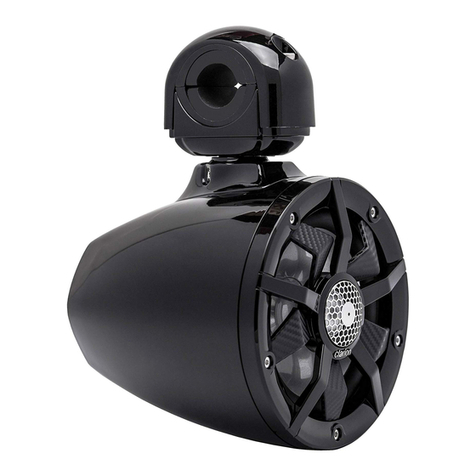
Clarion
Clarion CM1624TB Repair manual
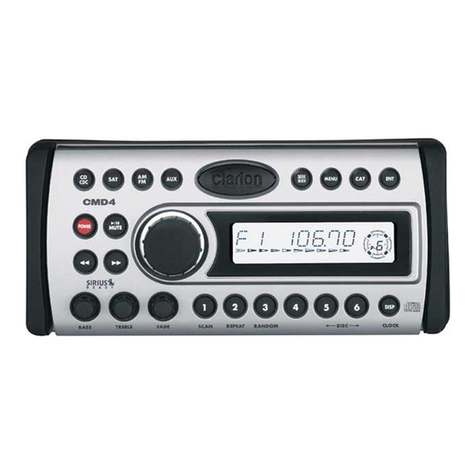
Clarion
Clarion CMD4 Instruction Manual
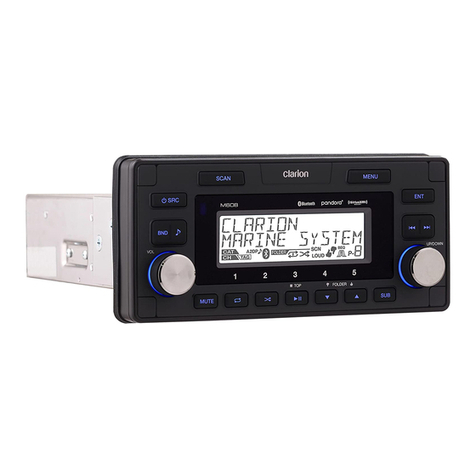
Clarion
Clarion CL92700 Repair manual

Clarion
Clarion CMS5 User manual
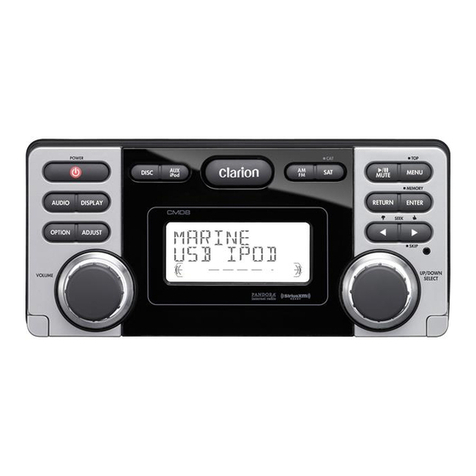
Clarion
Clarion CMD8 Repair manual
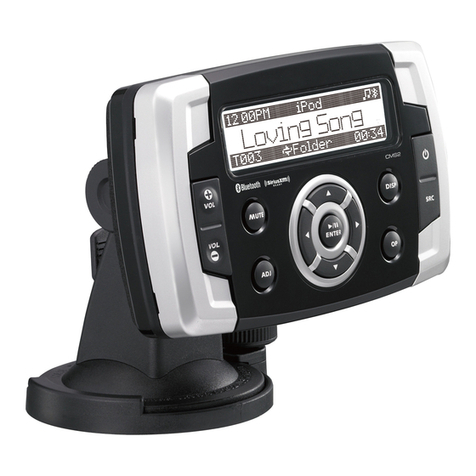
Clarion
Clarion CMS2 User manual
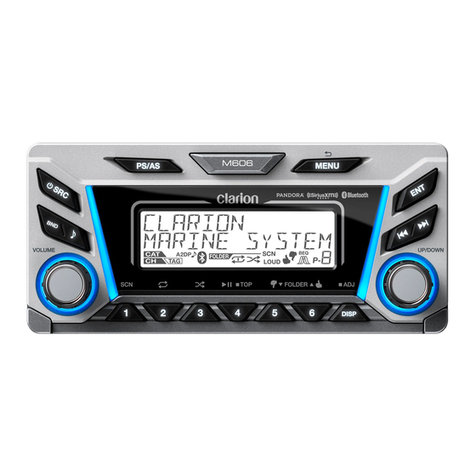
Clarion
Clarion M606 Repair manual
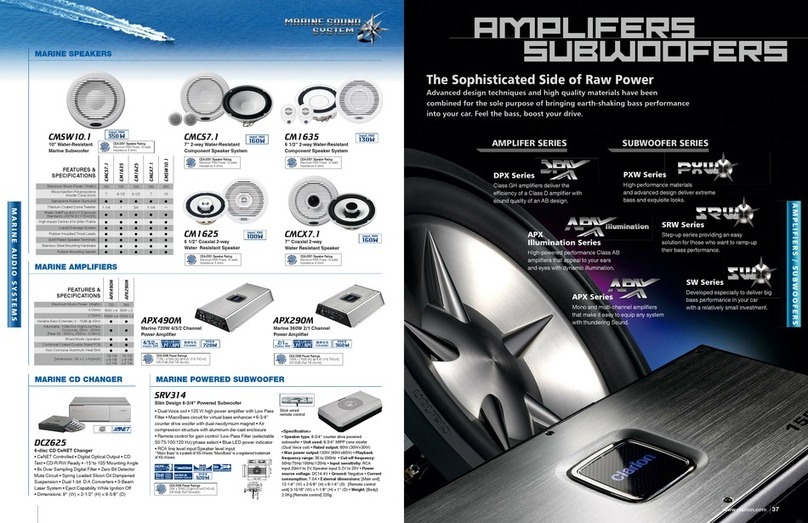
Clarion
Clarion APX490M User manual
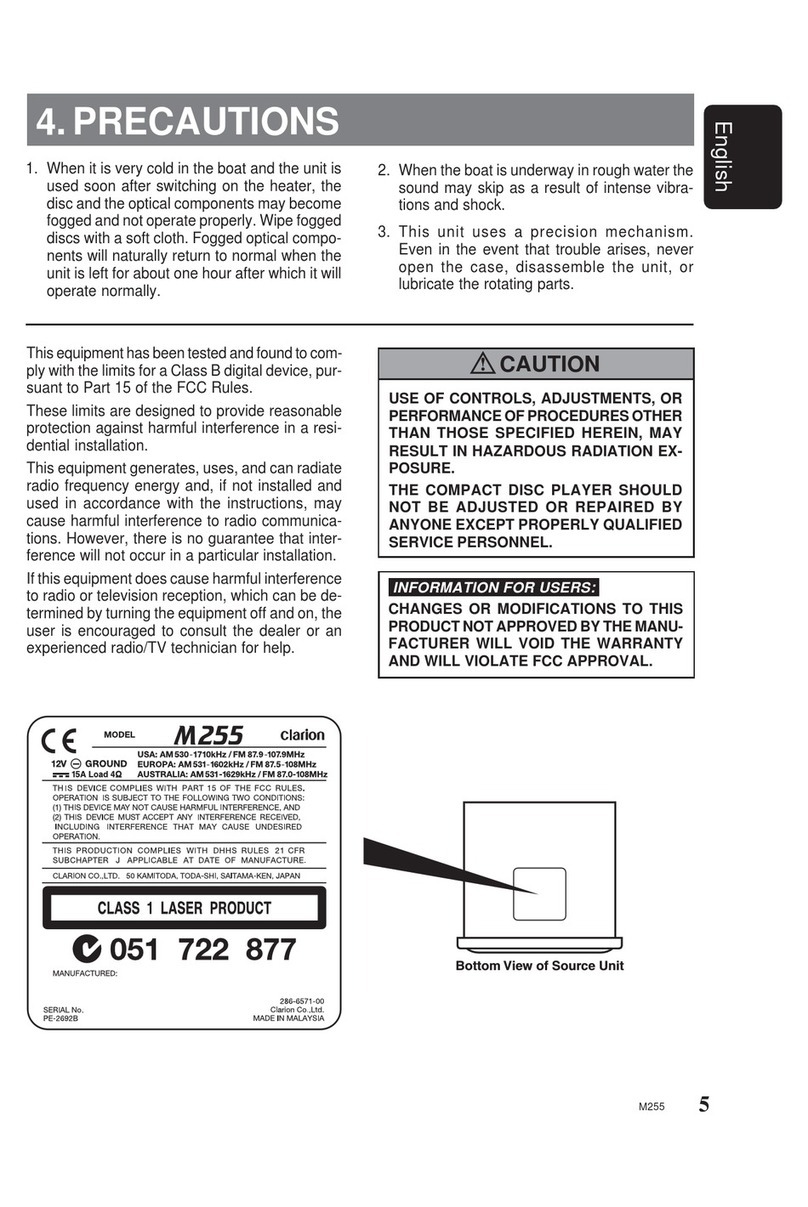
Clarion
Clarion M255 User manual
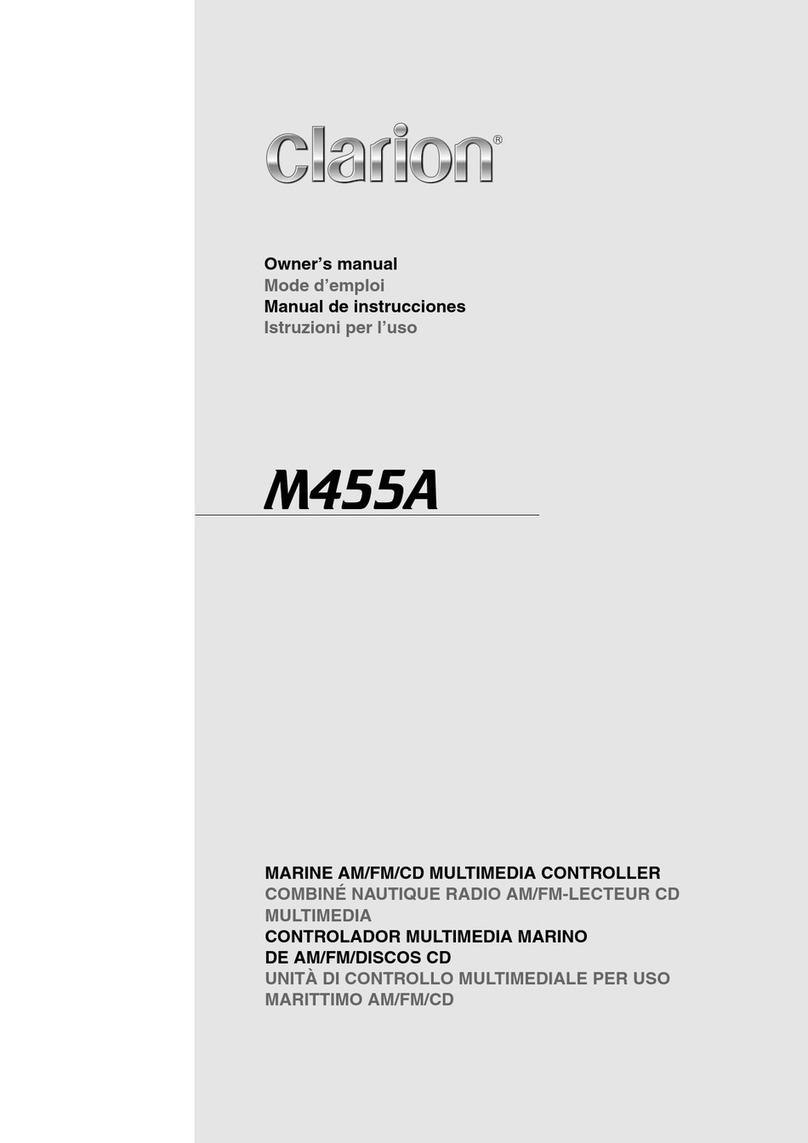
Clarion
Clarion M455A User manual



